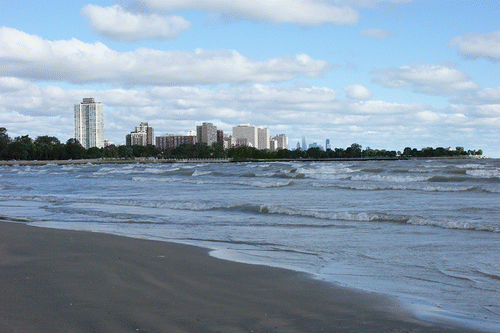Same-day water pollution test could keep beaches open more often

With warm summer days at the beach on the minds of millions of winter-weary people, scientists are reporting that use of a new water quality test this year could prevent unnecessary beach closures while better protecting the health of swimmers. A study analyzing the accuracy of the test appears in ACS' journal Environmental Science & Technology.
Meredith B. Nevers and colleagues point out that decisions on whether water is safe for recreational use have been based on tests that actually show the condition of water in the past. Those tests involve sampling water for the E. coli bacteria used as red flags for fecal contamination, putting the samples in culture dishes and waiting to see if any bacteria grow. As a result, managers might close a beach based on fecal contamination that existed in the past, but posed no current threat. Likewise, they might keep a contaminated beach open because the water was clean in the past.
They describe analysis and validation of a new rapid water-quality test that could prevent beaches from being closed by providing accurate, same-day results of bacteria levels. Developed by the U.S. Environmental Protection Agency, the test's same-day results could help managers across the country determine whether beaches are safe for swimming.
More information: Choices in Recreational Water Quality Monitoring: New Opportunities and Health Risk Trade-Offs, Environ. Sci. Technol., 2013, 47 (7), pp 3073–3081 DOI: 10.1021/es304408y
Abstract
With the recent release of new recreational water quality monitoring criteria, there are more options for regulatory agencies seeking to protect beachgoers from waterborne pathogens. Included are methods that can reduce analytical time, providing timelier estimates of water quality, but the application of these methods has not been examined at most beaches for expectation of health risk and management decisions. In this analysis, we explore health and monitoring outcomes expected at Lake Michigan beaches using protocols for indicator bacteria including culturable Escherichia coli (E. coli; EC), culturable enterococci (ENT), and enterococci as analyzed by qPCR (QENT). Correlations between method results were generally high, except at beaches with historically high concentrations of EC. The "beach action value" was exceeded most often when using EC or ENT as the target indicator; QENT exceeded the limit far less frequently. Measured water quality between years was varied. Although methods with equivalent health expectation have been established, the lack of relationship among method outcomes and annual changes in mean indicator bacteria concentrations complicates the decision-making process. The monitoring approach selected by beach managers may be a combination of available tools that maximizes timely health protection, cost efficiency, and collaboration among beach jurisdictions.
Journal information: Environmental Science & Technology
Provided by American Chemical Society


















